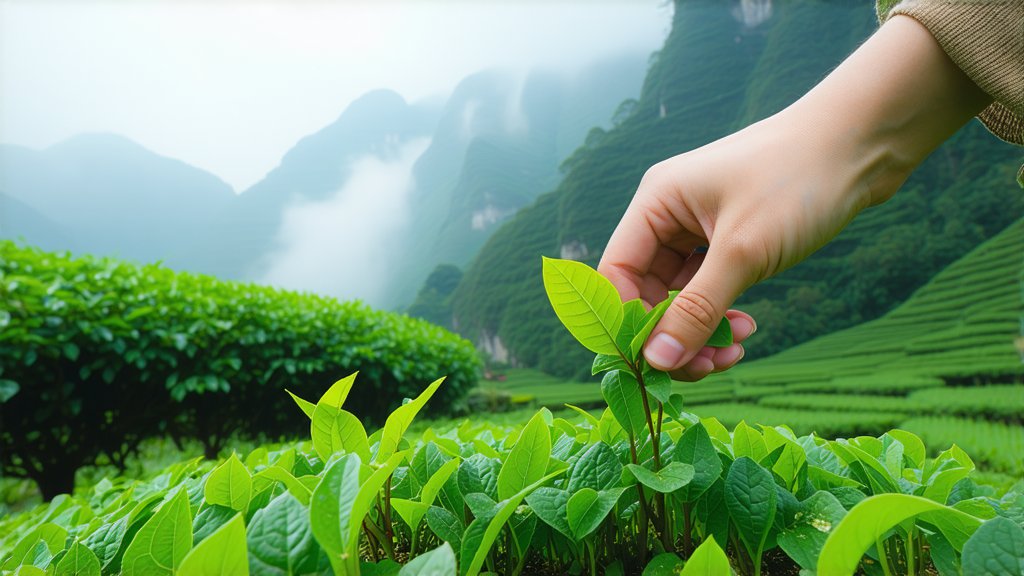
In the vast and diverse landscape of Chinese tea culture, few varieties hold as prestigious a position as Longjing, also known as West Lake Dragon Well tea. Originating from the picturesque village of Longjing in Hangzhou, Zhejiang Province, this green tea has captivated palates for centuries with its unique flavor profile and elegant appearance. As we embark on this exploration, let us delve into the rich history, intricate classifications, meticulous production process, and refined art of appreciating Longjing tea.
Historical Roots and Cultural Significance
Longjing tea traces its origins back to the Tang Dynasty (618-907 AD), though it was during the Qing Dynasty (1644-1912) that it truly gained prominence. Legend has it that an imperial decree led to the discovery of this exceptional tea when a drought struck the region. In a desperate attempt to appease the heavens, villagers offered tea leaves as a sacrifice. Impressed by the quality and taste, Emperor Kangxi ordered annual tributes of the finest teas, thus elevating Longjing to imperial status. Its association with royalty and high society further cemented its reputation as a symbol of sophistication and refinement.
Varieties and Classifications
Longjing tea is classified into several grades based on factors such as the timing of harvest, leaf size, and overall quality. The most prized among them are:
-
Xian Hao (Premium Grade): Harvested before Qingming Festival (Tomb-Sweeping Day), these early spring leaves are characterized by their tenderness and vibrant green hue. They offer a delicate aroma and a smooth, slightly sweet taste.
-
Yi Hao (First Grade): Picked shortly after Xian Hao, Yi Hao leaves are still young but slightly more mature, resulting in a fuller flavor profile with hints of nuttiness.
-
Er Hao (Second Grade): Later in the season, Er Hao leaves are larger and have a stronger taste, often preferred by those who enjoy a bolder cup of tea.
Each grade represents not only a difference in flavor but also a reflection of the terroir and artisanal skills involved in its cultivation and processing.
The Art of Longjing Tea Production
The journey from leaf to cup for Longjing tea is an intricate dance between man and nature, requiring precision, patience, and generations of expertise. Here's a glimpse into the traditional production process:
-
Cultivation: Longjing tea plants thrive in the humid subtropical climate of West Lake, nourished by fertile soils and abundant rainfall. Careful pruning and organic farming practices ensure optimal growth conditions.
-
Harvesting: The best leaves are handpicked, selecting only the youngest shoots and leaves. This labor-intensive process ensures that only the finest parts of the plant are used.
-
Fixation: Unlike other green teas that may be steamed or pan-fired at lower temperatures, Longjing undergoes a unique high-temperature pan-frying process. This step halts oxidation while preserving the leaves' natural green color and fresh aroma.
-
Shaping: After fixation, the leaves are skillfully shaped into their characteristic flat, sword-like form. This process requires deft hands and years of practice to achieve the perfect balance between aesthetic appeal and functionality for optimal steeping.
-
Drying: Finally, the shaped leaves are slowly dried to remove excess moisture without compromising their delicate flavors. The result is a product that encapsulates the essence of spring in every sip.
Appreciating Longjing Tea: A Sensory Experience
To truly appreciate Longjing tea, one must engage all the senses in a ritualistic manner reminiscent of ancient Chinese traditions. Here's how to savor this exquisite brew:
-
Visual Appreciation: Observe the dry leaves, noticing their uniform shape and vibrant green color. As they unfurl in hot water, watch for the transformation into a lively dance of emerald hues.
-
Aromatic Evaluation: Inhale deeply to detect the subtle yet complex bouquet of fresh grass, chestnuts, and a faint floral note. Each whiff tells a story of the land and craftsmanship behind the tea.
-
Tasting Ritual: Take your first sip slowly, allowing the tea to coat your palate. Notice the initial sweetness followed by a gentle bitterness that quickly dissipates, leaving a refreshing aftertaste. The mouthfeel should be smooth and silky, with no astringency.
-
Texture and Mouthfeel: Pay attention to how the tea feels in your mouth – it should feel velvety and light, almost ephemeral, enhancing the overall sensory experience.
-
Aftertaste: Savor the lingering flavors long after swallowing. A good Longjing will leave a clean, pleasant sweetness that invites you to take another sip.
In conclusion, Longjing tea is not merely a beverage; it is a testament to China's rich cultural heritage and an invitation to partake in a timeless tradition of tea appreciation. From its storied past to its meticulous production process and nuanced flavors, each aspect of Longjing tea offers a window into the soul of Chinese tea culture. Whether you're a seasoned connoisseur or a curious newcomer, embarking on this journey promises to be a rewarding exploration of both taste and tradition.